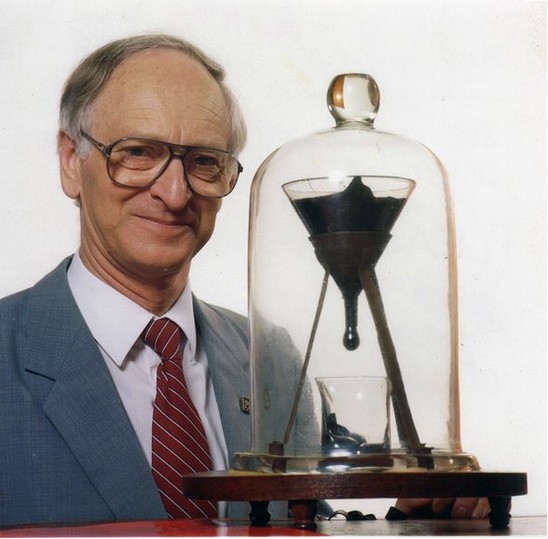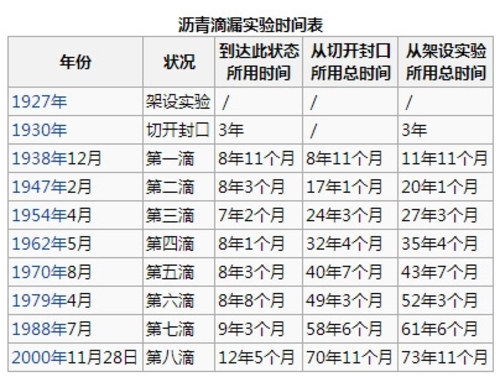In the 1920s, in order to show students that solids can also flow like liquids, Professor Parnell of the Department of Physics at the University of Queensland in Australia conducted an asphalt dripping experiment. Asphalt has two forms, solid and liquid, under different conditions. It is a viscous material that is commonly used for waterproofing. Its viscosity is 230 billion times that of water. Solids can resist the hammer's striking without deformation. But a funnel can make solid asphalt flow.
In the experiment, the researchers put the asphalt in a glass funnel, and by the action of the extrusion, the solidified asphalt also flows down like a liquid, but this process is very slow. How slow is asphalt flowing? Due to the drift of the plate, the Australian mainland will move about 6 centimeters to the north each year, and the speed of solidification of asphalt will be 10 times slower than that of the earth plate.
The physicist Messten took over the custody after Parnell’s death, after the asphalt had dropped 5 drops. Messmer could have witnessed the 3rd-longest experiment in the world, but Messrs. Maeder missed three short-lived drips momentarily, and he could not see it until his death. Wait for decades of experimental results.
It is reported that Maiston waited for a weekend at the time when the asphalt was about to drop in 1977, but the bitumen fell when he was exhausted and returned home. In 1988, a drop of bitumen approached the dripping state, and Mai Stone missed this rare moment after leaving the room and drinking a cup of coffee for only 5 minutes. In 2000, in order to fully record the moment of dripping, Meystone installed a web camera so that even if he was far away in the UK, he could see and record the moment when the asphalt dribbled. However, the tropical storm caused power outages for 20 minutes at the time. When power resumed, Mai Stone waited for more than 10 years for the asphalt to have fallen. Recently, the ninth bit of pitch finally fell again, but Prof. Maistom never saw the moment it fell. In August last year, Professor Mestone died of a stroke at the age of 78.
This experimental apparatus is now kept by White in Queensland University. White said that the experiment can last at least 80 years. At the current rate, the next bit of asphalt will drop in 2027. It is reported that this experiment was recognized by the Guinness Book of Records as the longest-running experiment in the world. It also won the Ig Nobel Prize in 2005. “The study is to make you laugh. And think about it."

